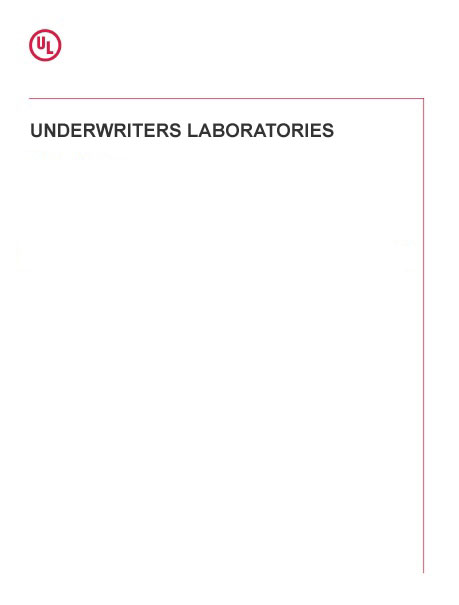
UL 155
Click here to purchase
Please note: All interim revisions for this edition available at time of your purchase will be included.
Tests for Fire Resistance of Vault and Fire Room Doors
UL 155
These requirements cover the test procedure applicable to the fire-resistance classification of doors intended for the protection of openings of vaults and file rooms.
Recommendations for record protection equipment and techniques, including the use and installation of vault or file room door assemblies, are contained in theStandard for Protection of Records, NFPA 232.
The terms “vault doors” and “file room doors” refer to assemblies consisting of doors, single or in pairs, the frame into which doors are hung, and the necessaryhardware. These assemblies are intended to provide fire resistance and protection to contents from heat for periods designated by the classifications to an extentdescribed in these requirements.
Vault doors are recommended for use on enclosures of limited volume [not exceeding 5000 cubic feet (142 m3)], constructed so that no point on the interior surfacewill reach a temperature exceeding 350 °F (177 °C) when separate vault members or the vault as a whole are exposed to a fire regulated according to the standardtime-temperature curve. See Figure .
File room doors are recommended for enclosures of large volume [not exceeding 50,000 cubic feet (1420 m3)] for the storage of records which are not of sufficientimportance to economically justify the provision of vaults. It is anticipated that combustibles will not be stored nearer than 3 feet (0.91 m) from the unexposed face ofthe door nor 6 inches (152 mm) to the side from the door joints.
It is intended that classification shall register performance during the period of exposure and shall not be construed as having determined suitability for use after fireexposure.
A product that contains features, characteristics, components, materials, or systems new or different from those covered by the requirements in this standard, and thatinvolves a risk of fire, electric shock, or injury to persons shall be evaluated using appropriate additional component and end-product requirements to maintain the thelevel of safety as originally anticipated by the intent of this standard. A product whose features, characteristics, components, materials, or systems conflict withspecific requirements or provisions of this standard does not comply with this standard. Revision of requirements shall be proposed and adopted in conformance withthe methods employed for development, revision, and implementation of this standard.
Product Details
- Edition:
- 8th
- Published:
- 04/05/2000
- Number of Pages:
- 24

